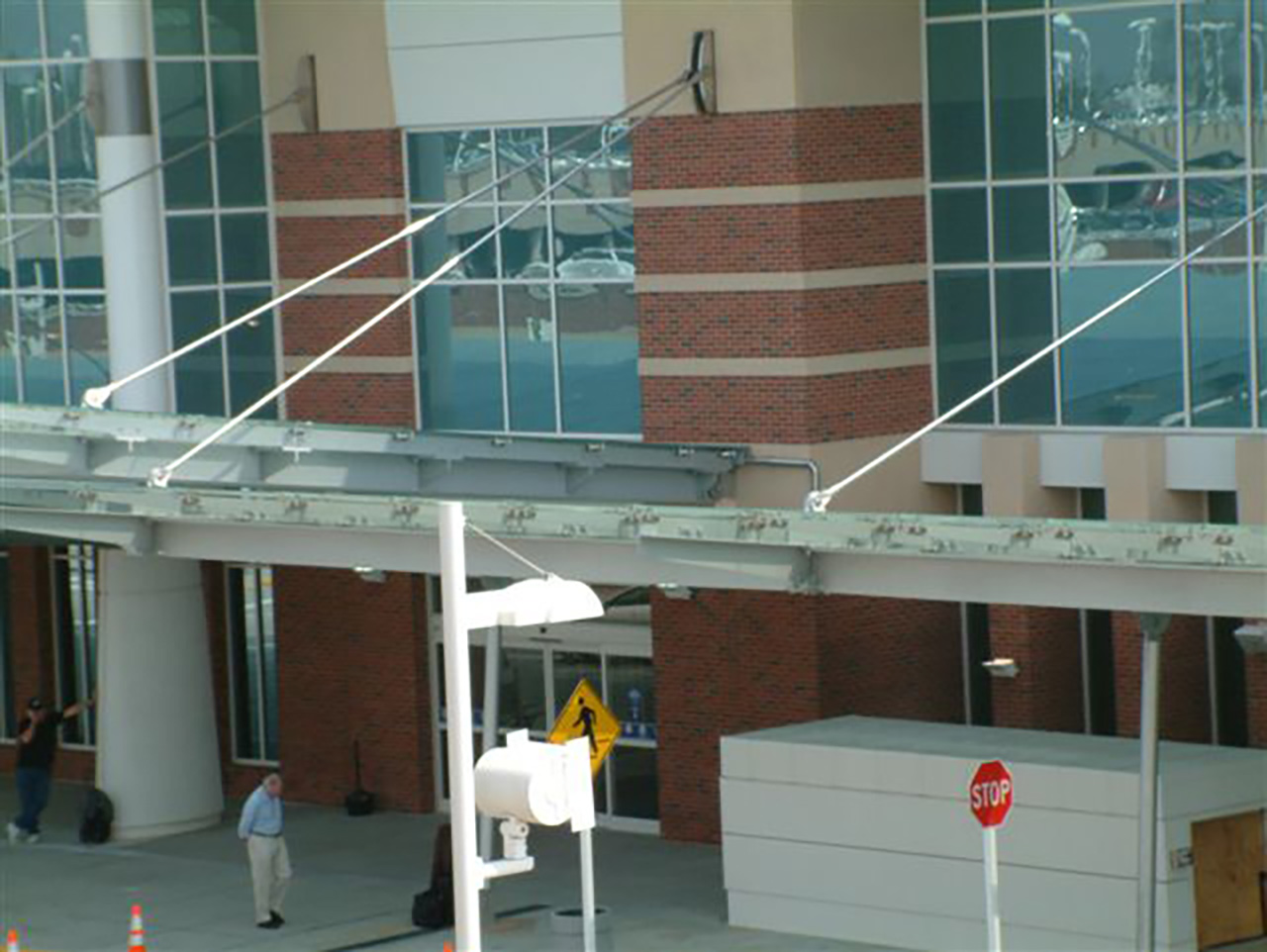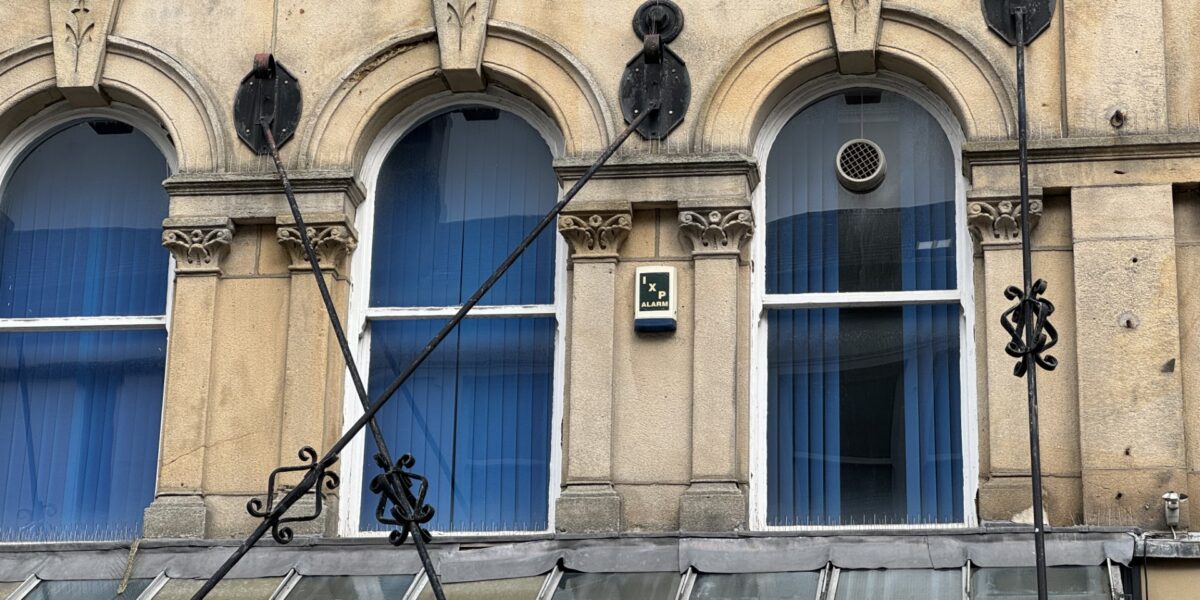Early use of tension rods
Known for their ability to provide structural stability through tension forces, ‘tension rods’ have played a crucial role in various engineering and architectural applications throughout history. In the early nineteenth century, canopies and awnings were often required to be suspended using a mix of ropes, pulleys, permanent frames, hooks, rings, and ‘tension rods’.
Historical example: Hoopers department store (Harrogate, UK)
An illustrative example is the canopy outside Hoopers department store in Harrogate, North Yorkshire, UK. This canopy (shown above), likely dating back to the early twentieth century, showcases the use of tension rods to support the structure. Despite being an addition to the original building constructed in 1896, it retains much of the original architectural charm.
Modern advancements in tension rods
Contrastingly to the above, modern canopies often employ advanced tension rods and bars, with the below image showing a Macalloy tension structure which highlights the evolution in both style and functionality over the last century. These contemporary tension rods offer post-tensioning options, enhancing their adaptability and performance after installation.

Technological progress in the 19th and 20th Centuries
With the advancement of steel construction techniques in the nineteenth and twentieth centuries, tension rods became integral to various architectural applications, including bridges, buildings, and other structures requiring tensile strength and stability.
Factors driving evolution
Several factors have driven the significant evolution of tension rod system construction over the twentieth century:
- Material Advancements: High-strength steel alloys became popular due to its superior tensile strength and durability.
- Manufacturing Improvements: Processes like hot forging, cold forming, and thread rolling enabled the mass production of tension rods with precise dimensions and high fatigue performance, reducing costs and standardising quality.
- Design Innovations: The advent of design software, such as CAD systems, revolutionised the way engineers approach tension rod applications. These tools allow for the modelling of complex designs, simulation of various load scenarios, and optimisation of designs for maximum efficiency and safety.
Contemporary applications
Today, tension rods are regularly utilised in bridge suspension systems, glulam structures, and industrial applications like tower cranes and lifting systems. Their versatility extends to architectural and more creative designs that were previously unexplored due to the enhanced qualities they now offer. Tension rods are suitable for lightweight and flexible structures, irregular designs, and dynamic environments.
Sustainability, green building & future use
Moreover, there is growing interest in using tension rod systems in green building projects. Their lightweight nature, minimal material usage, and potential for energy-efficient designs make them an attractive option for sustainable architecture. In summary, tension rods have evolved remarkably over the past century, driven by advancements in materials, manufacturing, and design. Their applications in modern architecture and engineering demonstrate their enduring importance and adaptability. As we continue to innovate, tension rods will likely remain a cornerstone in the development of robust, flexible, and sustainable structures.
